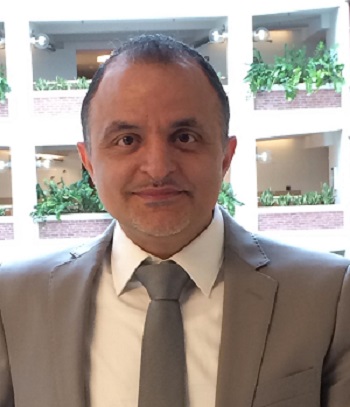WHY ARE YOU INTERESTED IN DIPG?
My research background is to study adult gliomas. I became interested in DIPG after witnessing the son of a dear friend of mine diagnosed with DIPG with no cure and very low survival rate.
YOU ARE STUDYING AN ANTI-MALARIA DRUG TO TREAT DIPG. WHY?
We tested many existing drugs on DIPG cells and discovered that Mefloquine is effective and potent in killing DIPG cells in all cultures tested. Mefloquine is the anti-malaria drug of choice for US Military deployed overseas and for travelers. We have preliminary results in DIPG cell cultures and mouse models that shows low dose Mefloquine restricted DIPG growth and improved their survival.
WHAT ARE THE BENEFITS OF RE-PURPOSING AN EXISTING DRUG TO TREAT DIPG?
There are several. Mefloquine has already been demonstrated to be safe for use in humans. So we do not need to prove that. It is FDA approved and available immediately for off-label use in DIPG. This will result in faster transition from bench to bed-side.
TELL US ABOUT MEFLOQUINE AND THE BLOOD-BRAIN BARRIER (BBB)
Getting drugs across the BBB to treat brain tumors in general and DIPG in particular is a big challenge. Fortunately, Mefloquine is known to cross that barrier and accumulate in the human brain. So this is a big advantage in potential DIPG treatment.
WHAT ARE THE SPECIFIC GOALS OF THIS RESEARCH BEING FUNDED BY THE CURE STARTS NOW AND DIPG COLLABORATIVE?
We will demonstrate that Mefloquine can cross the BBB, achieve the desired concentrations in the pons, halt tumor growth, and prolong survival in DIPG mouse models. These results should be sufficient to move to clinical trial with children diagnosed with DIPG.
HOW WILL YOU KNOW IF THE DRUG IS WORKING?
We are using technologies to simply light-up the DIPG tumor just like the firefly, and depending on the amount of light captured by the camera, we can see whether or not the drug is working. Basically, the less light output, the better benefit. These results are then confirmed ex vivo by removing the mice brains and looking for the tumor.
HOW WILL YOUR WORK BUILD ON PREVIOUS DIPG RESEARCH?
Our work will take advantage of DIPG cell lines and mouse models that have been developed by other leading researchers in the DIPG field. Collaborating with the broader DIPG research community will move the whole field forward more quickly.
WHY IS SUPPORT BY THE DIPG COLLABORATIVE AND THE CURE STARTS NOW IMPORTANT FOR YOUR WORK?
It is typically difficult to get federal funding for drug re-purposing. The DIPG collaborative and the Cure Starts Now will allow us to test this drug in a clinically-relevant mouse models of DIPG, and if proved successful, it can be easily translated to patients.


